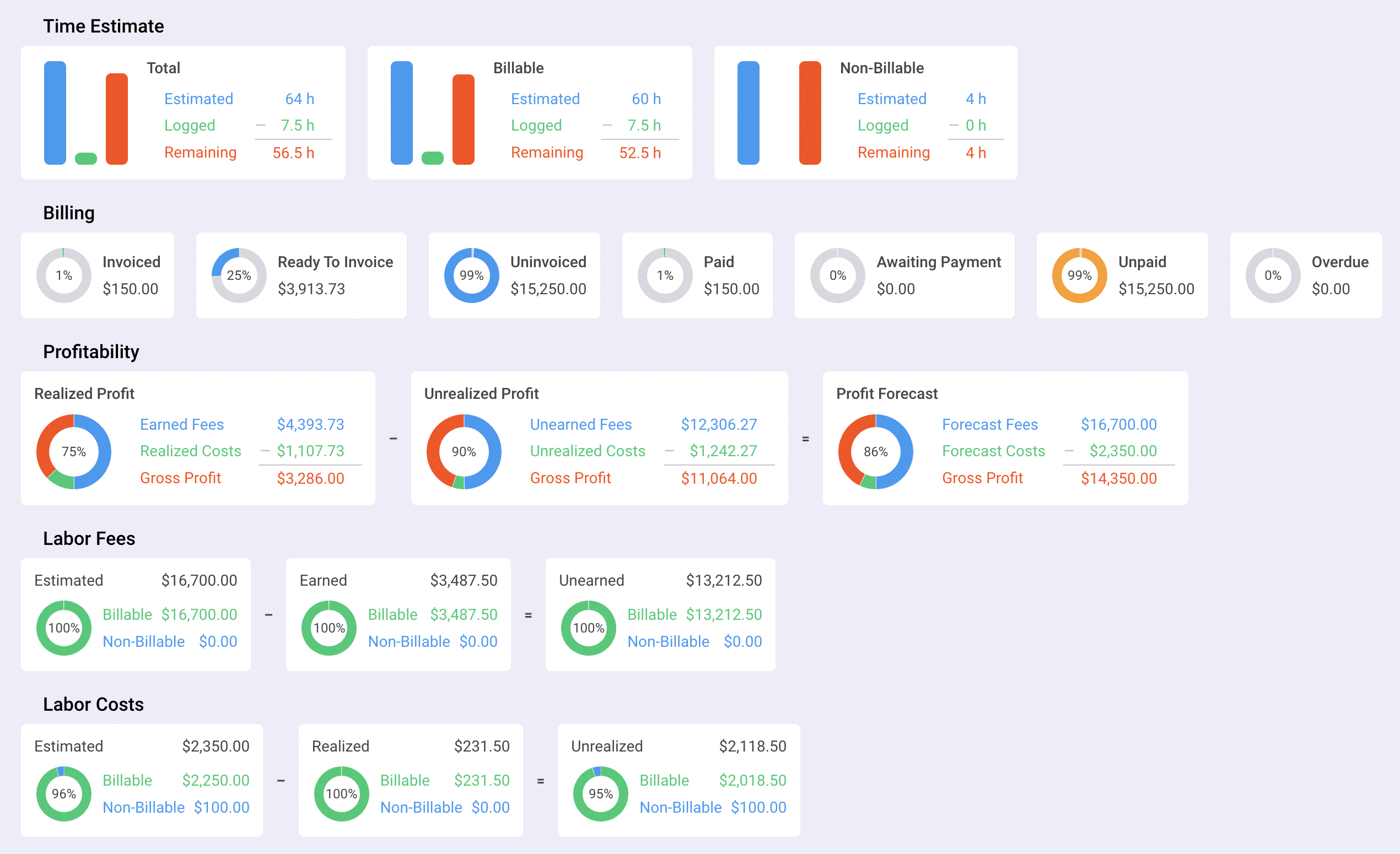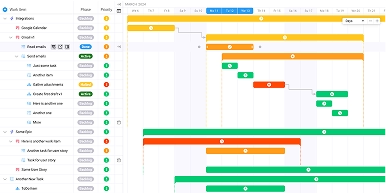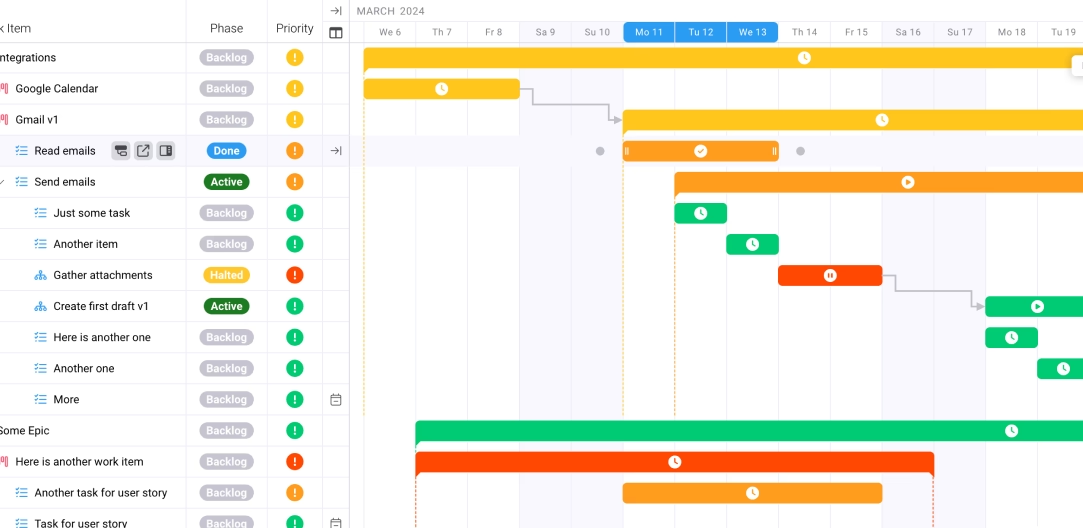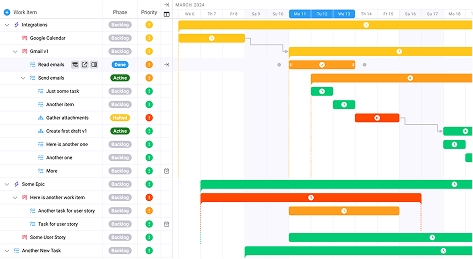
7 Signs It's Time to Invest in PSA Software
Key takeaways:
Bottom Line Up Front: If you're spending more than 30% of your time on administrative tasks, experiencing frequent project overruns, or struggling to track billable hours accurately, it's time to invest in PSA software. The PSA software market projected to reach $25.25 billion by 2030, growing at a CAGR of 11.9%, reflects the growing recognition among professional services firms that manual processes are no longer sustainable for scaling businesses.
Professional services automation has become the backbone of successful agencies, consulting firms, and service-based businesses worldwide. As companies grow beyond the startup phase, the warning signs that manual processes are holding back growth become impossible to ignore. Understanding when to make this critical technology investment can mean the difference between thriving in a competitive market and watching opportunities slip away.
The Current Challenge: Manual Processes Are Killing Professional Services Growth
The professional services industry faces a perfect storm of challenges that make traditional management approaches increasingly obsolete. Approximately 50% of projects are completed over budget, making it a significant challenge in project management, while 52% of project management professionals say resource management is their biggest challenge. These statistics reveal a troubling trend: despite decades of business evolution, many professional services firms still rely on outdated systems that undermine their profitability and growth potential.
The root cause often lies in fragmented processes that create visibility gaps across the entire service delivery lifecycle. When project managers can't accurately track resource utilization, when billing teams struggle with incomplete time records, and when executives lack real-time insight into project profitability, the entire business suffers. Most businesses permit two to five percent of their revenue to leak, representing millions in lost income for larger firms.
This revenue leakage isn't just about missing invoices or unbilled hours. It encompasses the hidden costs of inefficiency: the time spent searching for project documents, the delays caused by miscommunication between teams, and the client satisfaction issues that arise when deliverables fall short of expectations. Without integrated systems to manage these complexities, even the most talented teams find themselves fighting against their own processes rather than focusing on delivering exceptional client value.
Strategic Framework: Recognizing the Seven Critical Warning Signs
The decision to invest in PSA software shouldn't be reactive but strategic, based on clear indicators that your current systems are constraining growth. Smart professional services leaders monitor specific warning signs that signal when manual processes have reached their breaking point. These indicators often appear gradually, making them easy to rationalize or ignore until they compound into serious operational challenges.
Understanding these warning signs requires looking beyond surface-level symptoms to identify the underlying process breakdowns that create systemic problems. Each warning sign represents not just a current challenge but a future risk that will only magnify as your business scales. Client service businesses benefit from unified work management platforms that integrate project management, resource planning, and billing, making early recognition and action crucial for maintaining competitive advantage.
The seven warning signs we'll explore represent the most common and costly indicators that professional services firms encounter. Recognizing even two or three of these patterns suggests that your business would benefit significantly from professional services automation. Let's examine each warning sign in detail and explore the specific solutions that PSA software provides.
Implementation Tactics: The Seven Warning Signs You Need PSA Software
1. Time Tracking Has Become a Guessing Game
When team members routinely submit timesheets based on estimates rather than actual tracked time, your billing accuracy suffers dramatically. This seemingly minor issue creates cascading problems throughout your entire revenue cycle. Inaccurate time tracking leads to undercharging clients, overrunning project budgets, and providing unrealistic estimates for future work.
Modern agencies need comprehensive project management solutions to coordinate complex campaigns and client deliverables, yet many still rely on manual timesheets or basic spreadsheets. When employees spend more time figuring out how they spent their time than actually recording it, the system has failed. PSA software eliminates this guesswork through automated time capture, mobile apps for real-time tracking, and integrated project contexts that make time entry intuitive and accurate.
The financial impact of poor time tracking extends beyond immediate billing issues. When you can't accurately measure how long different types of work actually take, you can't price future projects competitively or allocate resources efficiently. PSA platforms solve this by providing detailed analytics on time patterns, enabling data-driven decisions about pricing, staffing, and service delivery optimization.

2. Project Visibility Has Disappeared into Spreadsheet Chaos
If project stakeholders regularly ask "What's the status?" and the answer requires digging through multiple spreadsheets, emails, and documents, you've lost project visibility. This lack of transparency creates anxiety among team members, frustration among clients, and decision paralysis among leaders. Effective project deliverable management requires systematic tracking and clear accountability processes, yet spreadsheet-based management makes this nearly impossible at scale.
Professional services automation addresses this challenge by creating a single source of truth for all project information. Real-time dashboards show project progress, budget utilization, resource allocation, and upcoming deadlines across your entire portfolio. Team members can instantly access the information they need, while managers gain the visibility required for proactive decision-making.
This improved visibility transforms client relationships by enabling proactive communication about project status, potential issues, and upcoming milestones. Instead of reactive status meetings focused on problem-solving, your team can have strategic conversations about optimization and future opportunities.
3. Resource Planning Feels Like Playing Tetris in the Dark
When resource allocation decisions are made without clear visibility into current workloads, upcoming project demands, and individual capacity, you're essentially playing Tetris in the dark. This leads to overallocated team members, underutilized specialists, and missed opportunities to balance workloads for optimal efficiency. The 79% of professional services firms use professional service automation systems because they recognize that successful resource management requires comprehensive visibility and planning tools.
PSA software transforms resource planning from guesswork into strategic optimization. Visual resource planning tools show individual and team capacity, project demands, and potential conflicts weeks or months in advance. This foresight enables proactive hiring decisions, strategic project scheduling, and workload balancing that maximizes both team satisfaction and project profitability.
Advanced PSA platforms also provide skills-based resource matching, ensuring that the right people work on the right projects based on expertise, availability, and development goals. This optimization doesn't just improve project outcomes—it enhances job satisfaction by aligning individual strengths with project needs.

4. Billing Cycles Have Become Monthly Nightmares
If month-end billing requires heroic efforts to collect time entries, hunt down expense receipts, and piece together project charges, your billing process is broken. This monthly scramble not only delays cash flow but also increases the likelihood of billing errors, missed charges, and client disputes. Companies can reduce administrative efforts by eliminating manual data entry, saving valuable time and resources, while ensuring consistent and accurate billing processes.
Professional services automation streamlines billing by automatically capturing billable time, expenses, and project milestones throughout the month. When billing time arrives, invoices generate automatically with detailed project breakdowns, supporting documentation, and accurate calculations. This automation reduces billing cycle time from days to hours while improving accuracy and professional presentation.
The impact extends beyond efficiency to cash flow improvement. Faster, more accurate invoicing leads to quicker client payments, while detailed invoice documentation reduces disputes and payment delays. Many firms see immediate cash flow improvements simply from getting invoices out faster and more consistently.

5. Client Communication Happens in Scattered Fragments
When project communication happens across multiple channels—email threads, phone calls, instant messages, and random document comments—important information gets lost and accountability suffers. Clients feel out of the loop, team members duplicate work or miss requirements, and project managers spend excessive time trying to keep everyone aligned.
PSA platforms centralize client communication through integrated portals that provide controlled access to project information, updates, and deliverables. Clients can track project progress, review completed work, and communicate directly with project teams through structured channels that maintain professional boundaries while improving transparency.
This centralized communication also improves internal collaboration by creating clear audit trails, reducing email overload, and ensuring that project-related decisions and changes are properly documented. The result is better project outcomes, improved client satisfaction, and reduced stress for team members.
6. Project Profitability Remains a Mystery
If you can only determine project profitability weeks or months after completion, you're missing opportunities to optimize performance and prevent losses. This delayed insight prevents mid-course corrections that could save struggling projects and fails to identify successful patterns that could be replicated across your portfolio.
PSA software provides real-time profitability analysis that shows budget utilization, resource costs, and margin trends throughout project execution. This visibility enables proactive management interventions that can save underperforming projects and optimize resource allocation for maximum profitability. Consulting firms using PSA software have 19% higher gross margins than those using spreadsheets, as well as 40% higher operating profit.
The strategic advantage of real-time profitability data extends beyond individual projects to portfolio optimization. You can identify which types of projects, clients, and service lines generate the highest margins, enabling strategic decisions about business development, pricing, and service offerings that maximize overall profitability.

7. Growth Creates More Problems Than Solutions
When adding new team members or taking on larger projects makes operations more chaotic rather than more profitable, your systems haven't scaled with your ambitions. This is perhaps the most critical warning sign because it indicates that growth itself has become a threat to business stability and quality.
Professional services automation provides the scalable infrastructure necessary for sustainable growth. Standardized processes, automated workflows, and integrated systems ensure that adding team members increases capacity without proportionally increasing administrative overhead or process complexity. Almost 60% of businesses have already implemented automation solutions, recognizing that manual processes become exponentially more complex as organizations grow.
The scalability benefits extend to client service quality and team satisfaction. Instead of growth creating stress and confusion, PSA platforms enable growth that improves service delivery through better resource utilization, more consistent processes, and enhanced visibility across all operations.
Measuring Success: ROI Metrics and Performance Indicators
The return on investment from PSA software implementation becomes apparent quickly when you track the right metrics. Most companies begin to see measurable ROI within 3-6 months of implementing PSA software, with benefits compound over time as teams become more proficient with the platform and processes mature.
Key performance indicators to track include billing cycle time reduction, resource utilization improvement, project margin enhancement, and client satisfaction scores. Many firms see immediate improvements in billing efficiency, often cutting billing preparation time by 50-70% in the first month. Resource utilization typically improves by 15-25% as visibility enables better planning and allocation decisions.
The most significant long-term benefits often appear in project profitability improvements and client retention rates. When projects run more smoothly, deliver on time, and maintain clear communication, client satisfaction increases dramatically. This satisfaction translates into repeat business, referrals, and opportunities for service expansion that far exceed the initial software investment.
Client acquisition also benefits from PSA implementation. Professional proposal processes, detailed project tracking, and polished client communications create competitive advantages that help win new business. The ability to provide detailed project reporting and transparent billing builds trust that often determines vendor selection in competitive situations.
Future Considerations: Emerging Trends and Next Steps
The professional services industry continues evolving rapidly, with automation becoming table stakes rather than competitive advantage. PSA software market projected to grow from USD 12,002.25 million in 2024 to USD 29,086.27 million by 2032, indicating widespread recognition that these tools are essential for modern professional services operations.
Artificial intelligence integration represents the next frontier in professional services automation. AI-powered features like predictive resource planning, automated time categorization, and intelligent project risk assessment are already appearing in leading platforms. Early adopters of these capabilities will gain significant advantages in operational efficiency and strategic decision-making.
The trend toward integrated platforms that combine PSA functionality with customer relationship management, financial management, and business intelligence capabilities will continue accelerating. Firms that invest in comprehensive platforms now position themselves for seamless feature expansion and avoid the integration challenges that come with point solutions.
Looking ahead, the most successful professional services firms will be those that view PSA software not as an operational tool but as strategic infrastructure that enables rapid scaling, consistent service delivery, and data-driven decision-making. The question isn't whether to invest in professional services automation—it's whether to invest now or wait until competitive disadvantages force the decision.
Conclusion
The seven warning signs we've explored—from time tracking chaos to growth-induced operational stress—represent more than mere inconveniences. They signal fundamental process breakdowns that constrain growth, reduce profitability, and undermine competitive positioning. The PSA software market projected to reach $25.25 billion by 2030, growing at a CAGR of 11.9% reflects the growing recognition that professional services automation isn't optional for firms serious about sustainable growth.
The decision to invest in PSA software requires careful evaluation of your specific needs, but the warning signs are clear indicators that manual processes have reached their limits. By recognizing these signals early and acting strategically, you position your professional services firm for sustainable growth, improved profitability, and enhanced client satisfaction in an increasingly competitive market.
Frequently Asked Questions
What exactly is PSA software and how does it differ from project management tools?
PSA software is a comprehensive platform that integrates project management, time tracking, resource planning, billing, and client relationship management specifically for professional services firms. Unlike basic project management tools, PSA platforms are designed for the entire quote-to-cash process.
How quickly can we expect to see ROI after implementing PSA software?
Most companies see measurable improvements within 3-6 months, with billing efficiency gains often appearing within the first month of implementation.
Will PSA software work for small professional services firms or is it only for larger companies?
PSA software scales effectively for firms of all sizes, with many solutions offering tiered pricing and features that grow with your business needs.
What's the biggest challenge in PSA software implementation?
The most common challenge is change management and user adoption, which can be mitigated through proper training, executive sponsorship, and phased rollout approaches.
Can PSA software integrate with our existing financial and CRM systems?
Modern PSA platforms offer extensive integration capabilities with popular financial, CRM, and business intelligence systems to avoid data silos.
How do we choose the right PSA software for our specific industry?
Look for platforms with industry-specific features, references from similar firms, and the flexibility to adapt to your unique service delivery processes.
What happens if our team resists adopting the new PSA system?
Success requires strong change management, comprehensive training, clear communication about benefits, and identifying internal champions who can drive adoption.
Is cloud-based PSA software secure enough for confidential client data?
Enterprise-grade PSA platforms employ bank-level security measures, including encryption, access controls, and compliance certifications for regulated industries.
How much does PSA software typically cost for a mid-sized professional services firm?
Pricing varies widely based on features and user count, typically ranging from $30-150 per user per month, with implementation costs separate.
Can we customize PSA software to match our unique business processes?
Leading PSA platforms offer significant customization capabilities for workflows, fields, reporting, and integrations to match specific business requirements.









